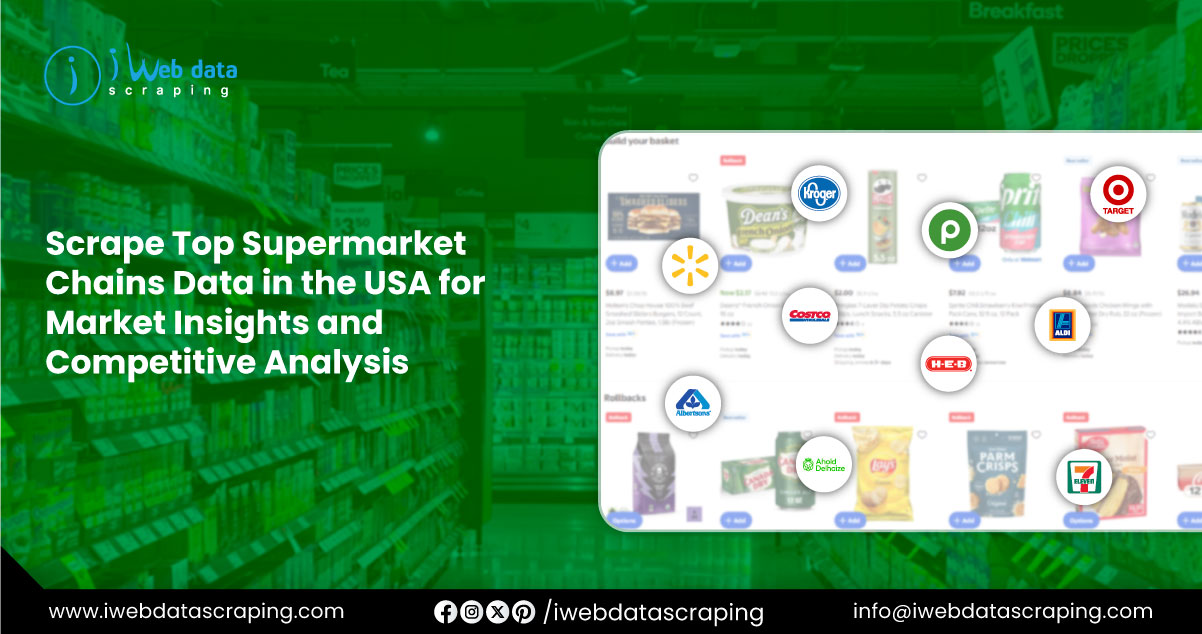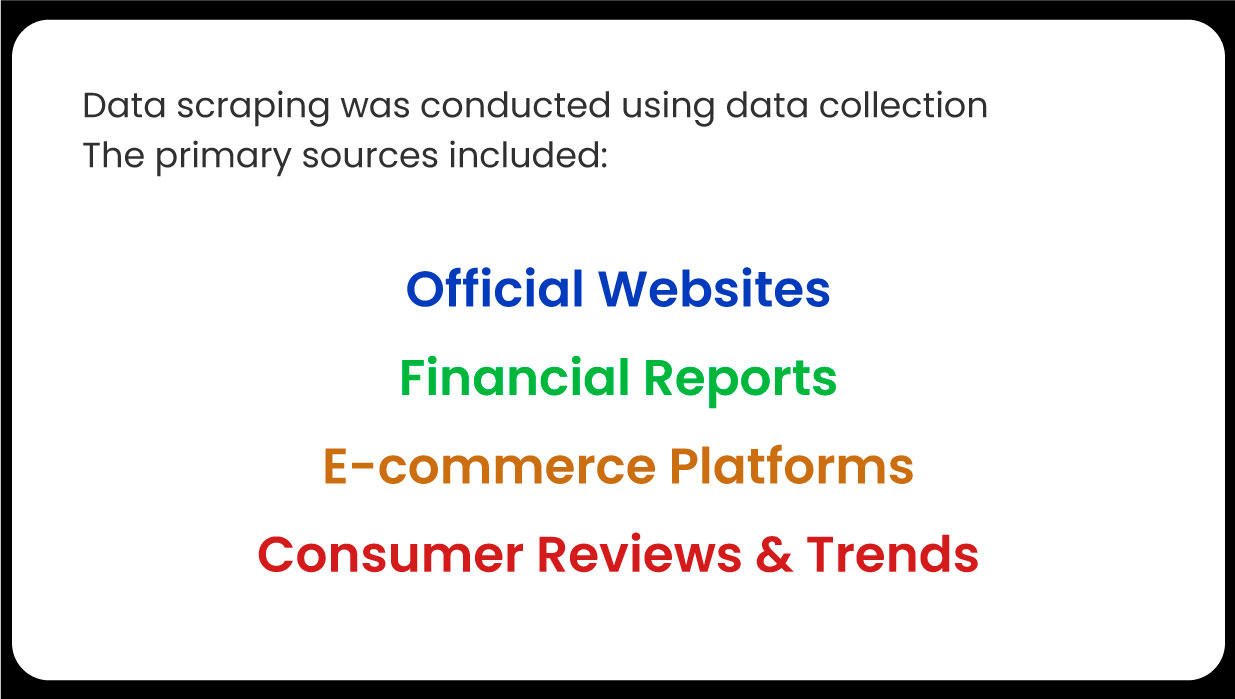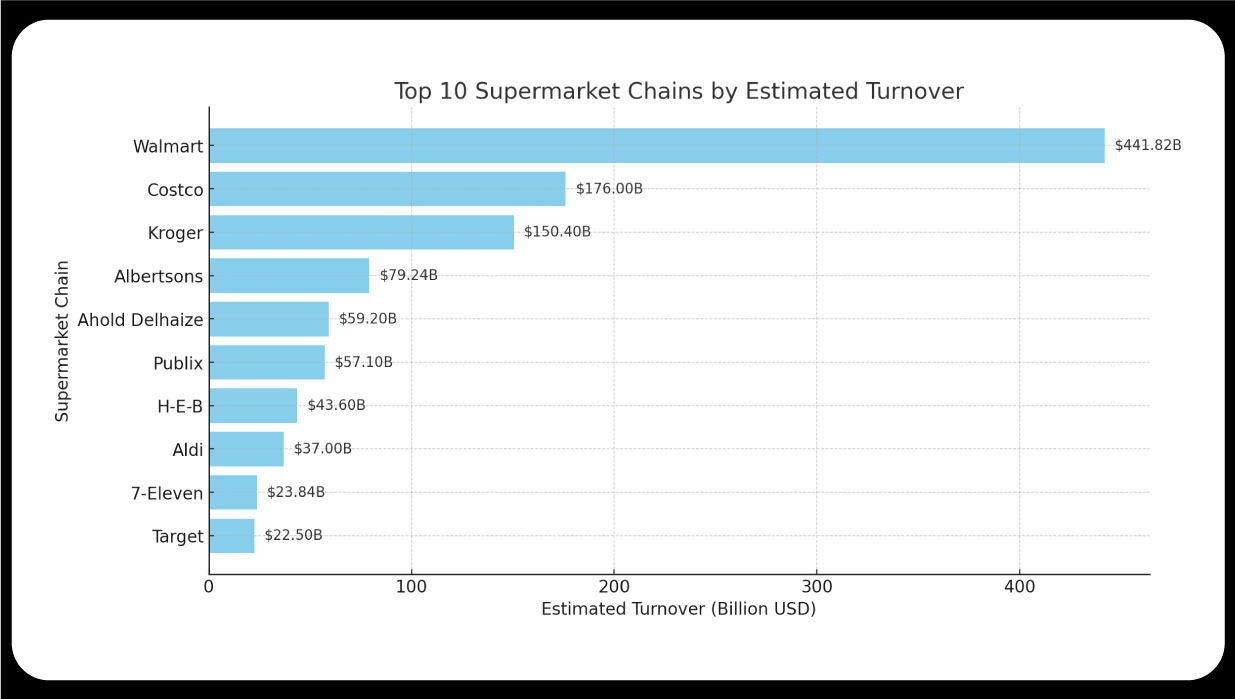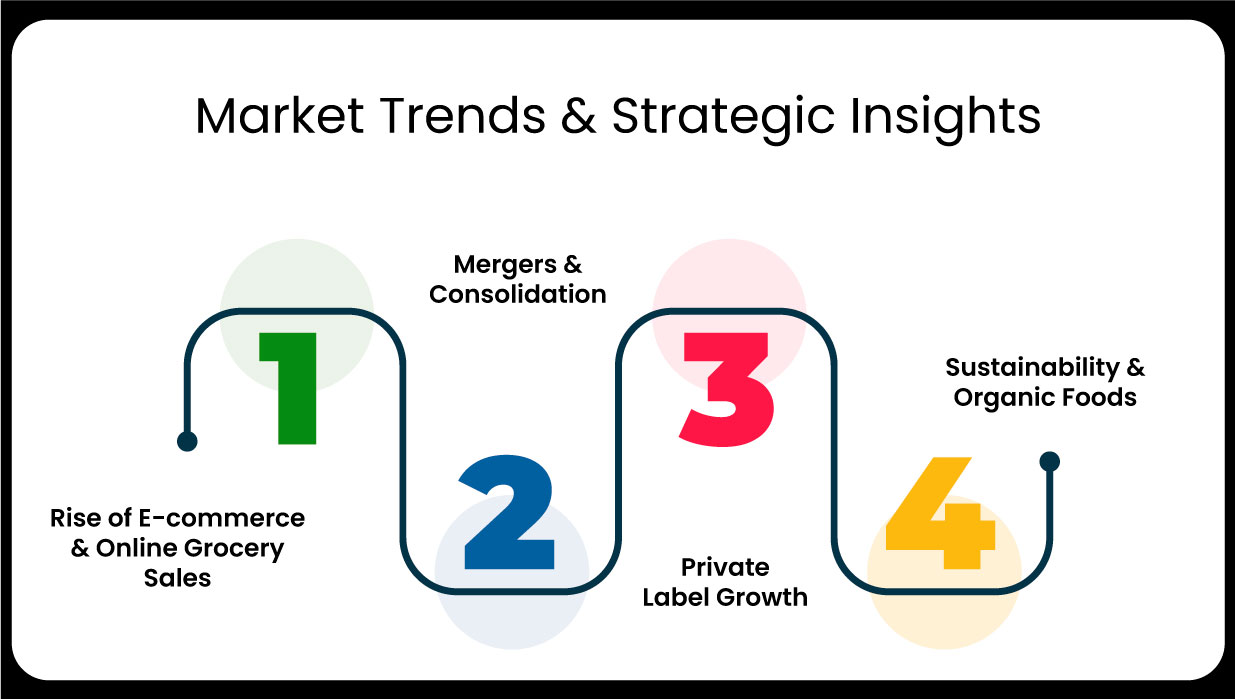

The U.S. supermarket industry is a vital component of the retail sector, serving millions of consumers daily. As businesses, researchers, and analysts increasingly depend on data-driven strategies, the need to Scrape Top Supermarket Chains' Data in the USA has grown significantly. By leveraging data extraction, companies can track real-time pricing trends, product availability, promotional campaigns, customer preferences, and competitive strategies.
This report focuses on the importance of using advanced services to Extract Grocery Retail Chain Data in the United States. It examines insights from the top 10 supermarket chains: Walmart, Kroger, Costco, Albertsons, Ahold Delhaize, Publix, H-E-B, Target, Aldi, and 7-Eleven. It explores key financial metrics, turnover rates, and grocery sector market trends.
Additionally, Web Scraping Supermarket Locations Data in the USA allows businesses to analyze store distribution, regional pricing variations, and consumer demand patterns. Retailers use Supermarket Chain Data Scraping Services USA to optimize inventory management, pricing strategies, and online grocery platforms. This report provides a detailed analysis of data-driven decision-making in the supermarket industry, helping businesses gain a competitive edge through real-time insights and strategic planning.

Data scraping was conducted using advanced web crawling techniques, APIs, and publicly available financial reports to ensure comprehensive and accurate data collection. The primary sources included:
Once collected, the raw data was processed through Grocery Data Scraping Services to clean, structure, and format it for analysis. Financial figures and key performance indicators were validated against publicly available Grocery and Supermarket Store Datasets and cross-referenced with official company reports to maintain accuracy.

The table provides a detailed financial overview of the top supermarket chains in the U.S., showcasing their estimated turnover, market share, and store count. Walmart dominates with a staggering $441.82 billion in revenue, securing a 22% market share across 5,200+ locations. Web Scraping USA's Largest Supermarket Chains helps businesses analyze such financial trends to understand market dominance.
Kroger and Costco follow with $150.4 billion and $176 billion turnovers, respectively, reflecting their strong grocery retail presence. Web Scraping Grocery Data enables companies to monitor pricing strategies, promotions, and product availability in these top chains. Regional players like Publix, H-E-B, and Aldi continue to expand, adapting to consumer demands. Grocery Pricing Data Intelligence Services further aid in analyzing competitive pricing trends and market performance.
The following table presents the estimated turnover and market share of the top U.S. supermarket chains:
Table 1: Financial Overview of Top Supermarket Chains in the U.S.
| Rank | Supermarket Chain | Estimated Turnover (Latest Fiscal Year) | Market Share (%) | Number of Stores |
|---|---|---|---|---|
| 1 | Walmart | $441.82 billion (2024) | 22% | 5,200+ |
| 2 | Kroger | $150.4 billion (2024) | 10% | 2,750+ |
| 3 | Costco | $176 billion (2023) | 5% | 600+ |
| 4 | Albertsons | $79.24 billion (2023) | 6% | 2,200+ |
| 5 | Ahold Delhaize | $59.2 billion (2023) | 3% | 2,000+ |
| 6 | Publix | $57.1 billion (2023) | 4% | 1,200+ |
| 7 | H-E-B | $43.6 billion (2023) | 2% | 400+ |
| 8 | Target | $22.5 billion (2022) | 2% | 1,900+ |
| 9 | Aldi | $37 billion (2021) | 1% | 2,000+ |
| 10 | 7-Eleven | $23.84 billion (2021) | 1% | 12,600+ |
1. Walmart: The Undisputed Leader
2. Kroger: A Strong Competitor
3. Costco: The Membership-Based Giant
4. Albertsons: Merging with Kroger
5. Ahold Delhaize: A Multi-Brand Retailer
6. Publix: Employee-Owned Success
7. H-E-B: A Texas Favorite
8. Target: Expanding Grocery Sales
9. Aldi: Growing Discount Model
10. 7-Eleven: Leading in Convenience Retail

The U.S. supermarket industry is evolving with shifting consumer preferences, digital transformation, and competitive pricing strategies. Data-driven insights help businesses identify emerging trends, optimize pricing, and enhance customer engagement. Understanding market dynamics and leveraging supermarket data scraping enables retailers to stay ahead in an increasingly competitive grocery landscape.
1. Rise of E-commerce & Online Grocery Sales
2. Mergers & Consolidation
3. Private Label Growth
4. Sustainability & Organic Foods
Scraping supermarket data offers insights into pricing trends, consumer behavior, and competitive strategies. Walmart dominates the sector, while Kroger, Costco, and Albertsons maintain strong market positions. The growing influence of e-commerce, private label brands, and sustainability initiatives is reshaping the grocery industry. Utilizing a Grocery Pricing Data Scraper helps businesses track real-time price fluctuations and competitor strategies. Additionally, Grocery & Supermarket Data Scraping Services enable retailers to analyze product demand, promotional trends, and regional pricing variations. By leveraging these insights, businesses can optimize pricing, improve inventory management, and enhance the overall customer experience in the evolving grocery landscape.
Experience top-notch web scraping service and mobile app scraping solutions with iWeb Data Scraping. Our skilled team excels in extracting various data sets, including retail store locations and beyond. Connect with us today to learn how our customized services can address your unique project needs, delivering the highest efficiency and dependability for all your data requirements.